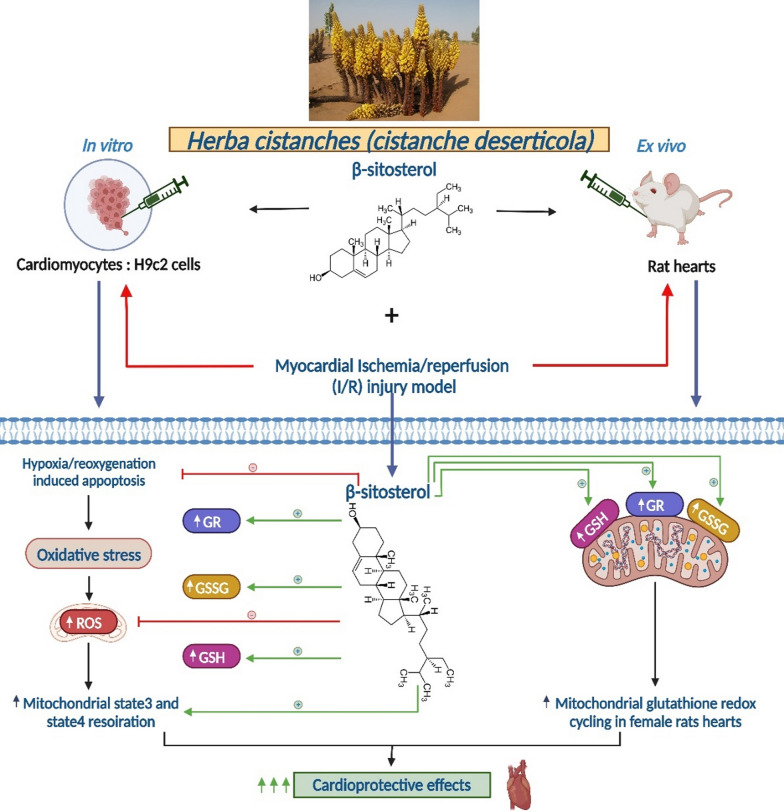Fig. 2.
Potential mechanistic pathways of the antioxidant effect of β-sitosterol leading to cardioprotective benefits using in vitro and ex vivo experiments. Mitochondrial ROS generation was enhanced by β-sitosterol. This phytosterol also increased mitochondrial respiration in states 3 and 4, decreasing coupling efficiency. In H9c2 cells, β-sitosterol increased glutathione redox cycling (GR, GSH, and GSSG) and protected against hypoxia/reoxygenation-induced apoptosis. Ex vivo, β-sitosterol protected the myocardium against I/R injury in female rats. The cardioprotective effect of β-sitosterol in this category was most likely mediated by an increase in mitochondrial glutathione redox cycling (GR, GSH, and GSSG). GR: glutathione reductase; GSH: reduced glutathione; GSSG: oxidized glutathione; ROS: reactive oxygen species; I/R: ischemia/reperfusion

